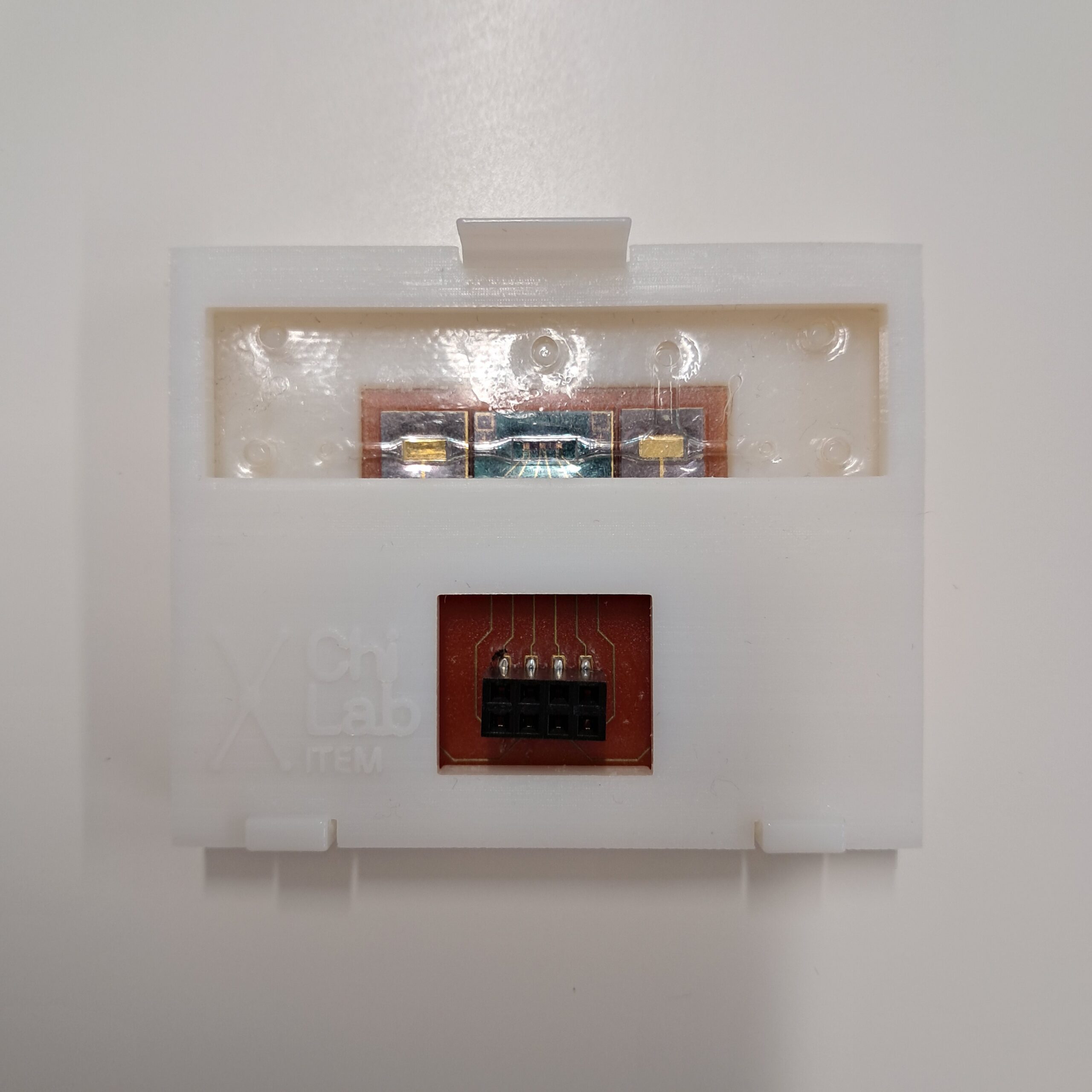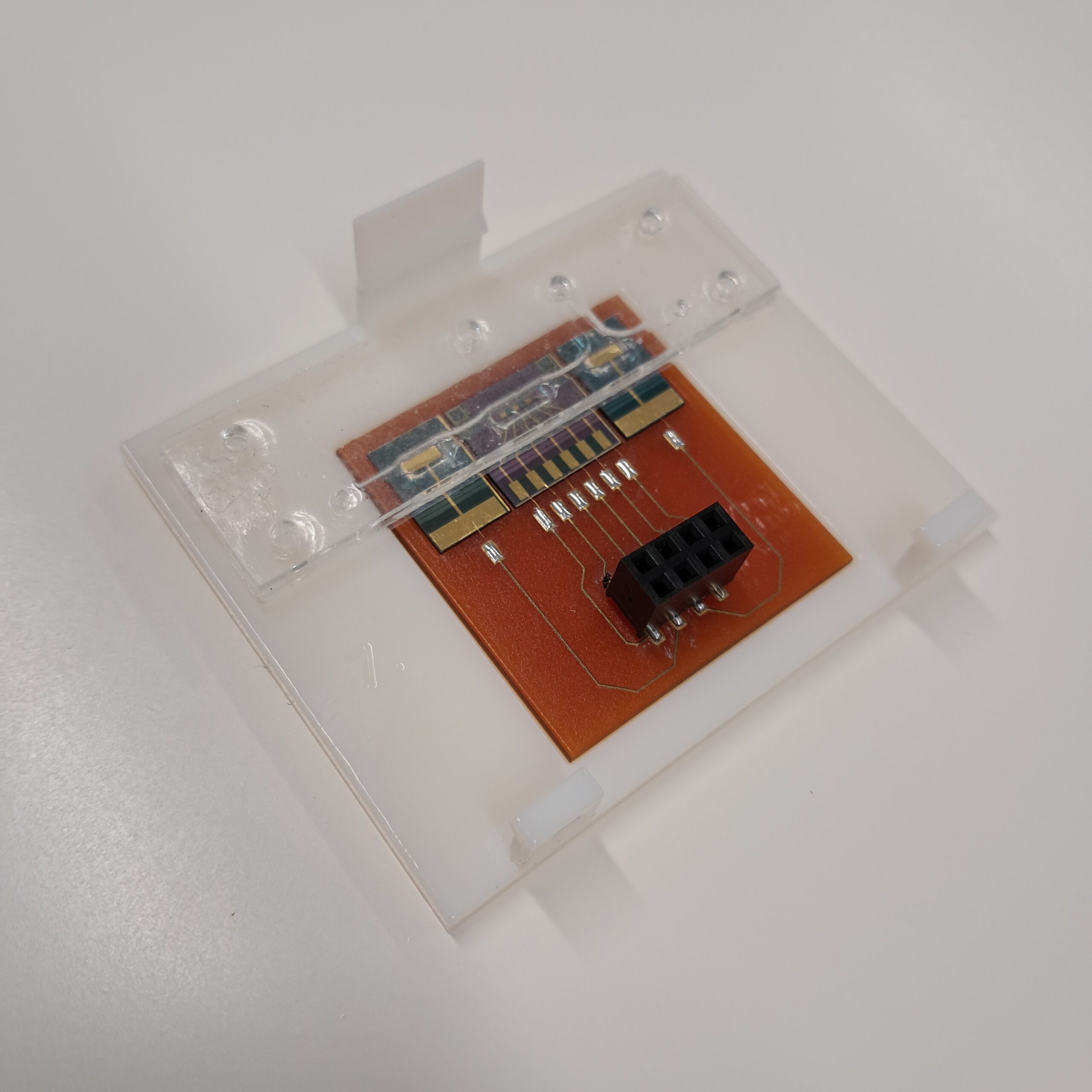

The aim of this work has been to optimize the packaging of a lab-on-a-chip (LOC) capable of detecting two cardiac biomarkers for early identification of acute myocardial infarction. LOCs are relatively small devices that itegrate measurement and analysis systems which are usually found in a laboratory environment. LOCs possess some advantages over traditional instruments, since they enable high-throughput screening. The device analyzed in this thesis comprises a microfluidic platform and an electronic component based on an organic electrochemical transistor (OECT). The optimization process was carried forward using different methods on the holder, the closing mechanism and the electronic component. Each component needed an upgrade in order to create a more accessible product. For the fabrication and the validation of the new version of the device, techniques such as additive manifacturing, wire bonding and replica molding were employed.